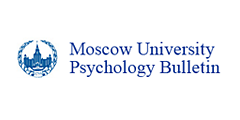Creative Thinking Training as a Means of Development of Conflict Competence of a Professional
Abstract
The psychological basis of creative thinking training as a means of development of conflict competence of a professional includes: in the first place, the knowledge of psychological nature of creative thinking of a professional; in the second place, recognition of above situational thinking as a leading quality in the structure of creative professional thinking; consideration of above situational thinking in the context of development of conflict competence of a professional, in the third place. In order to develop conflict competence, it is necessary to learn to get above the level of momentary requirements of a situation, to detect above situational problems, to set the goals, excessive from the point of view of the initial task. Professionals, thinking in terms of above situation, while analyzing a conflict situation, start to realize and actualize their own resources, which facilitates a creative way in problems resolving. It is the detection of above situational problems that forms the basis for creative thinking and is characterized by a set of key personal qualities necessary for his self-transformation as an agent.
Themes: Psychology of creativity; Applied psychology and psychotherapy; Organizational psychology
PDF: http://psychologyinrussia.com/volumes/pdf/2010/22_2010_kashapov.pdf
Pages: 463-481
DOI: 10.11621/pir.2010.0022
Keywords: conflict competence, creative conflict resolution training, psychodiagnostics of metacognitive components of conflict competence, the analysis of cognitive characteristics of conflict interaction
To cite this article: Kashapov M.M. (2010). Creative Thinking Training as a Means of Development of Conflict Competence of a Professional. Psychology in Russia: State of the Art, 3, 463- 481
The journal content is licensed with CC BY-NC “Attribution-NonCommercial” Creative Commons license.










